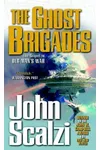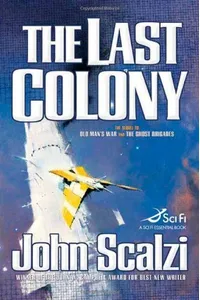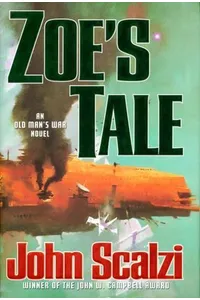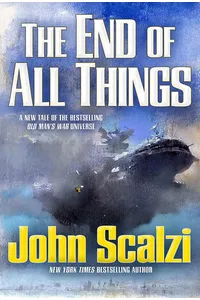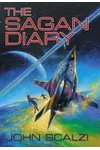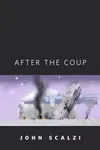Step into the thrilling cosmos of Old Man’s War, where 75-year-old recruits become humanity’s last hope in a galaxy teeming with hostile aliens! John Scalzi’s groundbreaking military science fiction series blends heart-pounding action, sharp humor, and deep questions about identity, aging, and the cost of war, captivating readers with its fresh take on the genre.
Since its debut in 2005, Old Man’s War has redefined military SF, earning a Hugo Award nomination and spawning a beloved six-book saga. With its accessible prose and thought-provoking themes, it’s no wonder fans and critics hail Scalzi as a modern master of science fiction.
How Old Man’s War Began
Inspired by Robert A. Heinlein’s classic Starship Troopers, John Scalzi crafted Old Man’s War to explore a gritty, human-centric vision of interstellar conflict. Initially serialized on his blog, Whatever, in 2002, the novel caught the eye of Tor Books editor Patrick Nielsen Hayden, leading to its 2005 publication. Scalzi’s goal was to create a marketable military SF story that balanced action with emotional depth, drawing readers into a universe where age is no barrier to heroism.
Scalzi’s own career shift from a laid-off AOL writer to a full-time novelist fueled the series’ creation. His witty, conversational style and knack for blending humor with tragedy set Old Man’s War apart, laying the foundation for a saga that’s both entertaining and profound.
The Heart of Old Man’s War
The series kicks off with Old Man’s War (2005), where John Perry, a 75-year-old widower, joins the Colonial Defense Forces (CDF). His consciousness is transferred into a genetically enhanced, youthful body, thrusting him into brutal battles against alien races like the Rraey and Consu. The Ghost Brigades (2006) shifts focus to the CDF’s Special Forces, exploring the ethics of creating soldiers from DNA. The Last Colony (2007) sees Perry navigating political intrigue, while Zoe’s Tale (2008) retells the story from a young girl’s perspective, adding emotional depth.
Themes of identity, mortality, and the morality of war weave through the series. Scalzi’s universe is vast yet intimate, with a ‘show, don’t tell’ approach that brings alien cultures and human struggles to life. The humor—think sarcastic banter amid cosmic chaos—keeps the tone light, even as characters grapple with loss and sacrifice. From the towering Beanstalk space elevator to the enigmatic Obin, the setting feels both epic and relatable.
The Human Division (2013) and The End of All Things (2015) round out the series, using episodic narratives to explore diplomacy and survival. Each book builds on the last, creating a cohesive saga that balances action with introspection.
Why Old Man’s War Resonates
Old Man’s War has left a lasting mark on military science fiction, blending accessibility with sharp critiques of militarism. Its Hugo nomination and fanbase—evident in glowing Goodreads reviews and Reddit threads—highlight its appeal. The series’ exploration of rejuvenation and identity resonates in an aging world, while its humor and heart make it a gateway to SF classics like Asimov and Clarke.
Adaptation attempts by Paramount, Syfy, and Netflix (as of 2024, still in development) underscore its cultural impact. Scalzi’s ability to craft relatable characters in a hostile universe ensures the series remains a fan favorite, inspiring rereads and discussions about humanity’s place in the stars.
About Old Man’s War
- Publication: First book released in 2005 by Tor Books.
- Series Length: Six novels, plus novellas and short stories.
- Awards: Hugo Award nomination for Best Novel (2006).
- Author: John Scalzi, known for Redshirts and The Collapsing Empire.
Dive into Old Man’s War and join John Perry’s interstellar adventure! Grab the first book and discover why this series is a must-read for sci-fi fans craving action, humor, and heart.

